멕시코 국가 조사(영문)
 등록일 / 수정일
등록일 / 수정일 페이지 / 형식
페이지 / 형식 자료평가
자료평가 구매가격
구매가격
- 2011.03.01 / 2019.12.24
- 52페이지 /
 docx (MS워드 2007이상)
docx (MS워드 2007이상) - 평가한 분이 없습니다. (구매금액의 3%지급)
- 2,800원
최대 20페이지까지 미리보기 서비스를 제공합니다.
자료평가하면 구매금액의 3%지급!
 1
1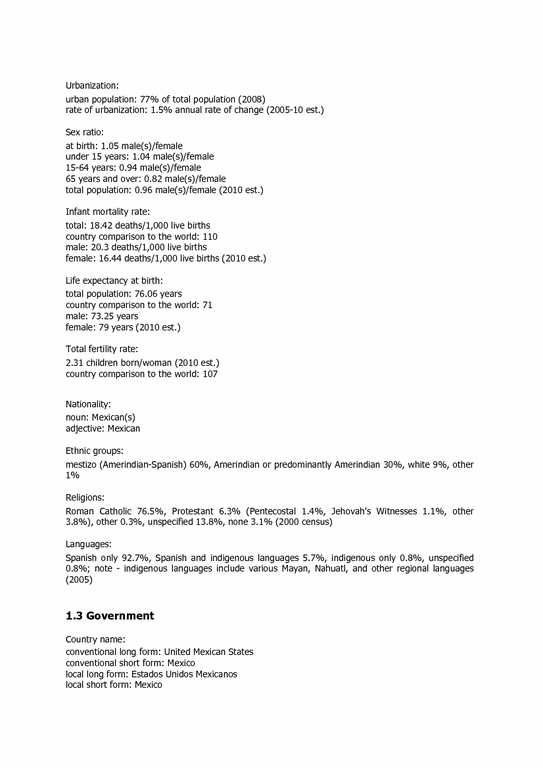 2
2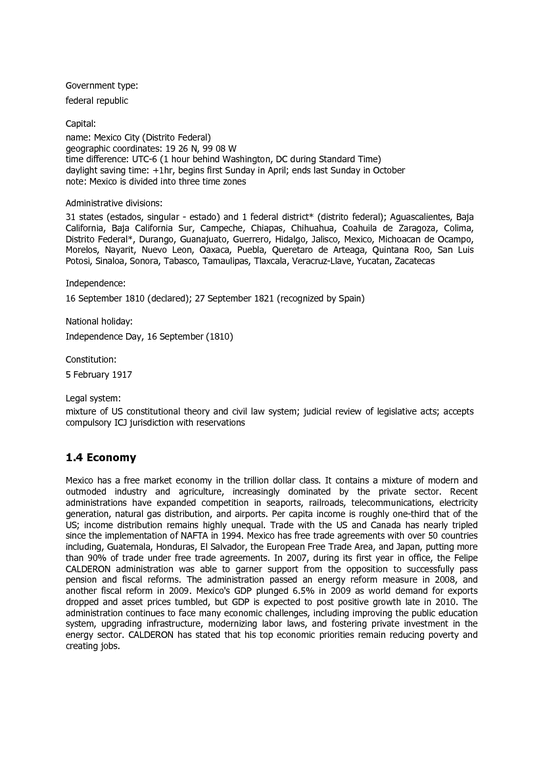 3
3 4
4 5
5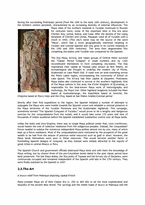 6
6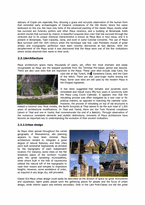 7
7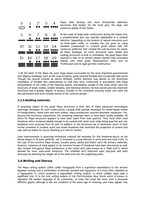 8
8 9
9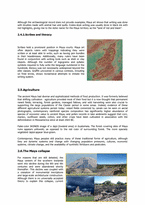 10
10 11
11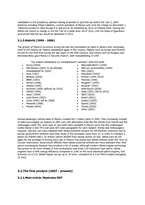 12
12 13
13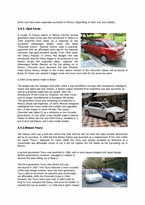 14
14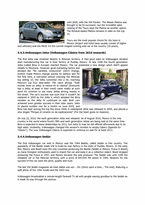 15
15 16
16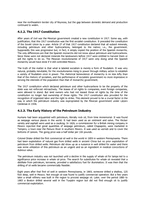 17
17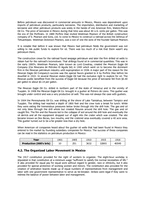 18
18 19
19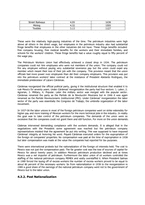 20
20
추천 연관자료
- 목차
-
1. Information of Mexico
1.1 Background
1.2 People
1.3 Government
1.4 Economy
2.The Maya Civilization
2.1.Geographical extent
2.2.Classic
2.3.The Art
2.4.Writing and literacy
2.5.Agriculture
2.6.The Maya collapse
3. Car industry
3.1. Mexican automotive history
3.2.The first product (2007 - present)
3.3 Automotive culture and Mexico Autoshow
3.4. Successful cars in Mexico
4. Petroleum Industry
4.1. History
4.2. The Organized Labor Movement in Mexico
4.3. Nationalization
4.4. Distribution of Petroleum Production in Mexico
4.5. Oil Production
4.6. Mexico and Korea FTA
5.Tourism
5.1. Mexico, the tourist industry trends
5.2. Mexican Regional Tourism Trends
5.3. Competitiveness level
5.4.Prospects and Implications
5.5.The most popular attractions - beach
5.6.Other attractions
6.Mexican War of Independence
6.1.Beginning of the War
6.2.History
6.3.Effects in Mexico
6.4. Effects internationally
- 본문내용
-
3.2.The first product (2007 - present)
3.2.1.Main article: Mastretta MXT
Mastretta (est. 1989) first announced production of their MXT through Automóvil Panamericano magazine in May 2007. Even though up to a year will have passed, September 2008 will see the production version of the first ever fully Mexican designed and engineered serial-produced sports car, the Mastretta MXT, an automobile built in a similar way of those of English Lotus Cars, being their Elise its main target. To date, 42 makers have official representation in the country with nearly 400 different models, making Mexico one of the most varied and fulfilled automotive markets in the world. While Lancia and Lexus are due to arrive in 2009, the only missing "mainstream" makers, Citroën and Kia, have given no official advice, although the latter has commented so in the past.
In Mexico City the "Hoy no circula" ("Today you can't drive") program is implemented. Every vehicle has a color sticker depending on the ending number of its plate, as well as a number to determine its pollution rate. Brand new cars "00" and recent models "0" are exempt; "Hoy no circula" only applies to vehicles older than 8 years, which have "1" and "2" designations. The program works by removing these vehicles from circulation one day during the week, and recently one Saturday per month, depending on their last license plate digit number. Said limitations occur as follows:
• Plates ending with 5 or 6 (yellow) cannot be driven on Mondays and the 1st Saturday of the current month.
• Plates ending with 7 or 8 (pink) cannot be driven on Tuesdays and the 2nd Saturday of the current month.
• Plates ending with 3 or 4 (red) cannot be driven on Wednesdays and the 3rd Saturday of the current month.
• Plates ending with 1 or 2 (green) cannot be driven on Thursdays and the 4th Saturday of the current month.
• Plates ending with 9 or 0 (blue) cannot be driven on Fridays and the 5th Saturday (if any) of the current month.
For example, a fictional 1985 Volkswagen Golf with 903-NRX plates won't be allowed to be driven on Wednesdays and the 18th of September, 2010, nor the 16th of October, 2010, etc. The newer weekends restrictions have received criticism. Only a few months a year have five Saturdays, and so the blue-stickered cars will be removed only four or five weekends a year from circulation, while the rest of the cars will be weekend-banned once every month.
3.3 Automotive culture and Mexico Autoshow
3.3.1.Main article: Salón Internacional del Automóvil México
Since the first "Autoexpo del Automóvil" the automotive culture in Mexico started growing in the Mexicans. The publication of the first Mexican auto magazines was in November 1981, Motor y Volante magazine, in early 1995 4 Ruedas Magazine and shortly after Automóvil Panamericano edited by Televisa encouraged it also. The Autoexpo changed denomination in 2004 into the "Salón Internacional del Automovil" to convert into an international size event. It is in fact an event comparable to the North American International Auto Show in Detroit. In the first two editions of the Mexico Autoshow brands new to Mexico, like Mazda, were introduced. On the other hand, some manufacturers like Jaguar and Volvo have been to neither the 2004 nor the 2005 editions. On the other hand, Renault would attend every two years. However, the 2006 edition of the autoshow was considered a failure and a fraud since over 15 carmakers missed the event, including Volkswagen Group, Renault and Peugeot. After the 2006 edition and for the first time since 1994, SIAM wasn't hosted in 2007, but it was stated that the 2008 edition is to be held by September, making a two-year event such as the Sao Paolo one.
3.4. Successful cars in Mexico
Some cars have been especially successful in Mexico, depending on their cost and viability.
3.4.1. Opel Corsa
A couple of Chevys saloon in Mexico CityThe second generation Opel Corsa was first introduced in Mexico in 1994 imported from Spain as a response to the successful Volkswagen Sedán, under the name "Chevrolet Chevy". General Motors used a practical, supermini with an affordable price tag for the Mexican consumer that gave excellent results. From 1996, when the Chevy Popular, or Chevy Pop Budget trim was introduced, and the Chevy began to be produced in the Ramos Arizpe GM assembly plant, replaced the Volkswagen Sedan (Beetle) as the top selling car in Mexico. Chevrolet soon launched the also Mexican made Chevy Monza, similar to the 4 door saloon version of the Chevrolet Classic still produced in Brazil, for those who wanted a bigger trunk and more room with for the same low price.
A 2006 Corsa saloon made in Brazil
The design was not changed until 2000, when it was facelifted in Europe with transparent headlights, newer rear lights and new interior. A station wagon imported from Argentina was also launche
자료평가
-
아직 평가한 내용이 없습니다.
오늘 본 자료
더보기

최근 판매 자료
- 재무관리의 목표인 이익 극대화보다 기업가치의 극대화가 적합한 이유를 설명하시오
- [사회복지] 치매 노인의 삶의 질적 향상을 위한 복지정책의 필요성
- 안드라고지의 개념 및 가정을 서술하고 페다고지와의 차이점을 분석한 후 안드라고지와 페다고지에 대한 학습자의 의견을 서술하시오
- 성인학습자의 학습장애 요인에는 어떤 것이 있는지 인지적, 정의적, 신체적 차원에서 기술하고 학습장애를 해결하기 위해 어떤 교육방법
- 사회복지정책론) 신자유주의와 복지국가의 후퇴에 대해 설명하시오
- 마케팅 철학의 개념과 마케팅 철학 단계 5가지를 정리한 후, 향후 마케팅 철학은 어떻게 변할 것인지에 대한 방향성을 제시하시오.
- 마케팅철학의 개념과 마케팅철학 단계 5가지를 정리한 후, 향후 마케팅 철학은 어떻게 변할 것인지에 대한 방향성을 제시하시오
- 경영정보시스템_4주차 1강에서는 RFID에 대해 학습하였습니다 RFID 기술의 개념 및 문제점에 대하여 설명하고 국내외 사례 및 도입 전 후 효과를 조사하여 리포트를 작성하시오
- 역량강화모델(권한부여모델 또는 임파워먼트모델)에 대해 간략히 정리하시오.
- 이산확률분포에 대하여 요약하여 정리하시오
저작권 관련 사항 정보 및 게시물 내용의 진실성에 대하여 레포트샵은 보증하지 아니하며, 해당 정보 및 게시물의 저작권과 기타 법적 책임은 자료 등록자에게 있습니다. 위 정보 및 게시물 내용의 불법적 이용, 무단 전재·배포는 금지됩니다. 저작권침해, 명예훼손 등 분쟁요소 발견시 고객센터에 신고해 주시기 바랍니다.









